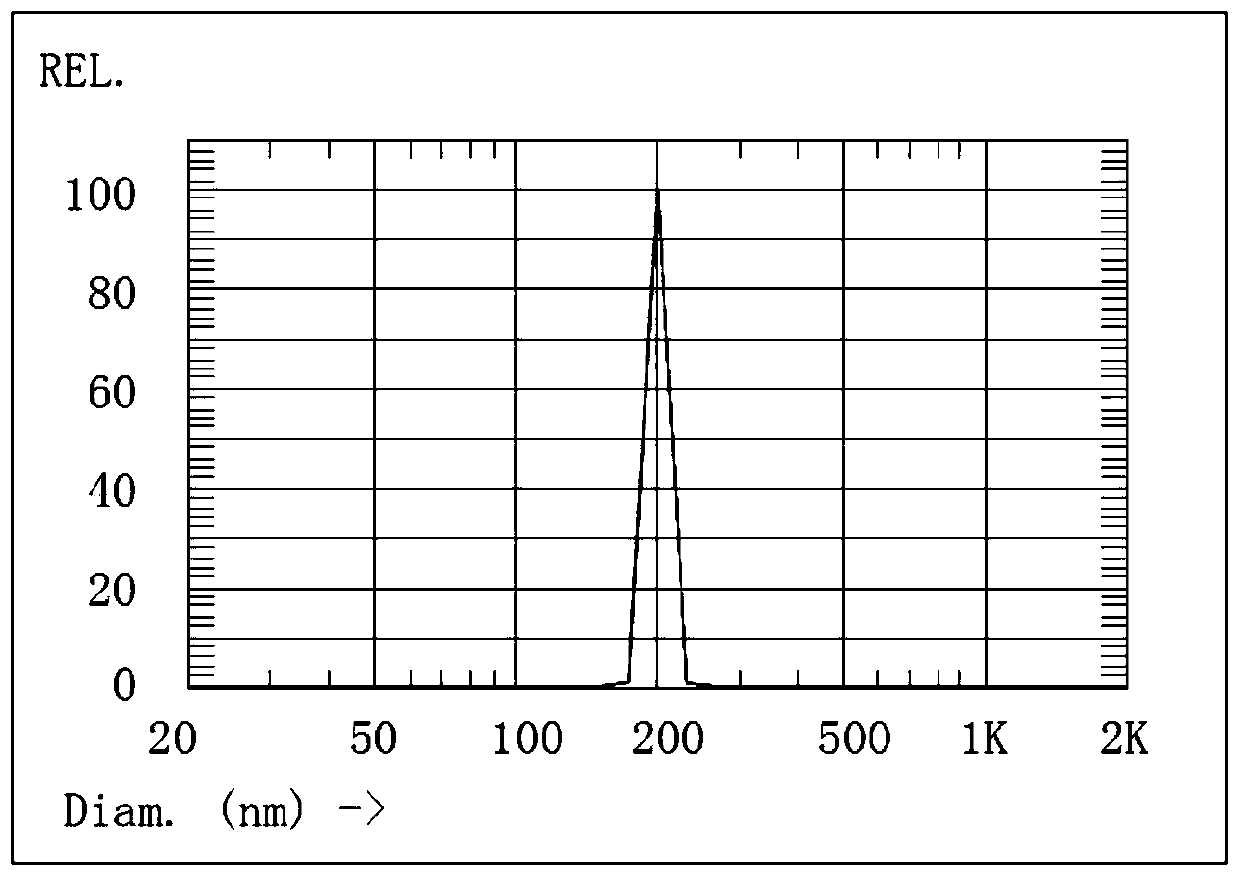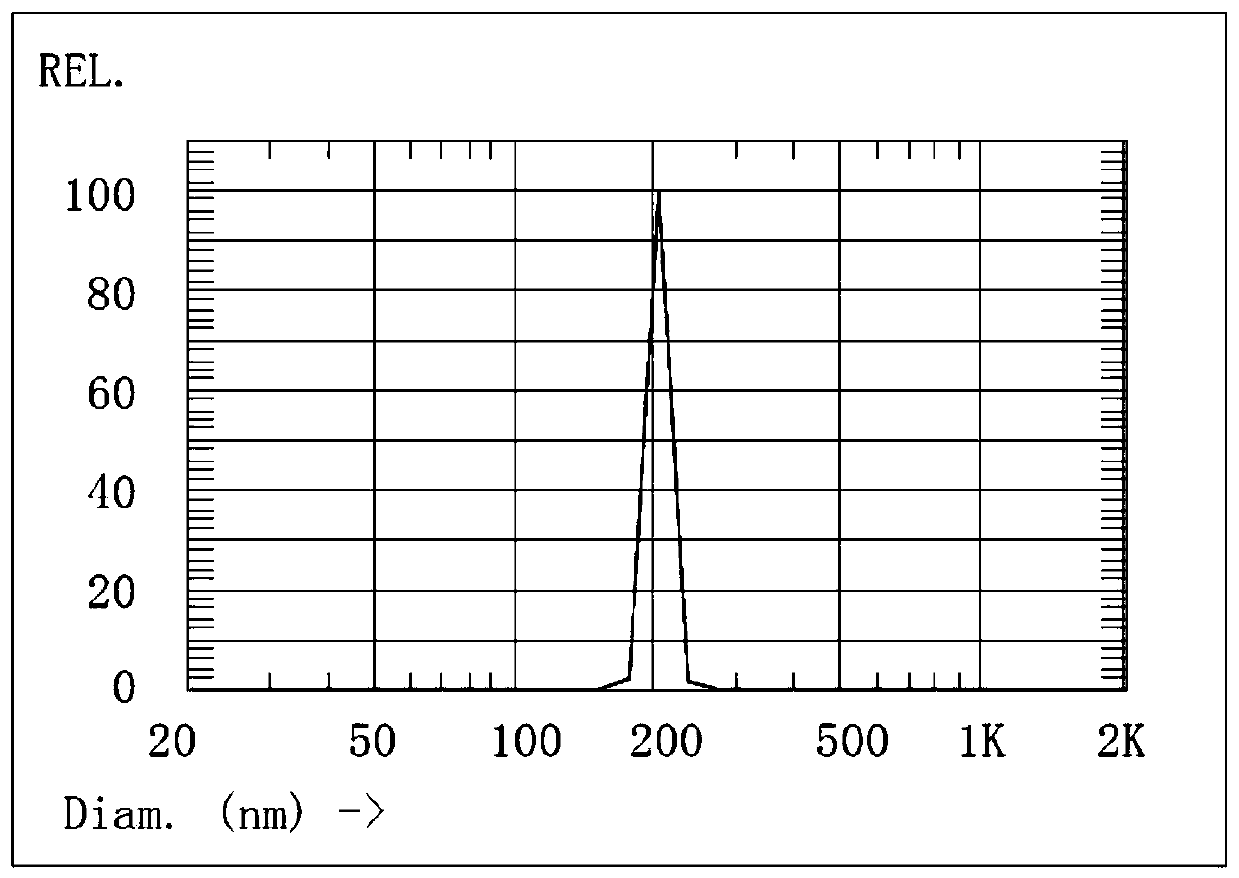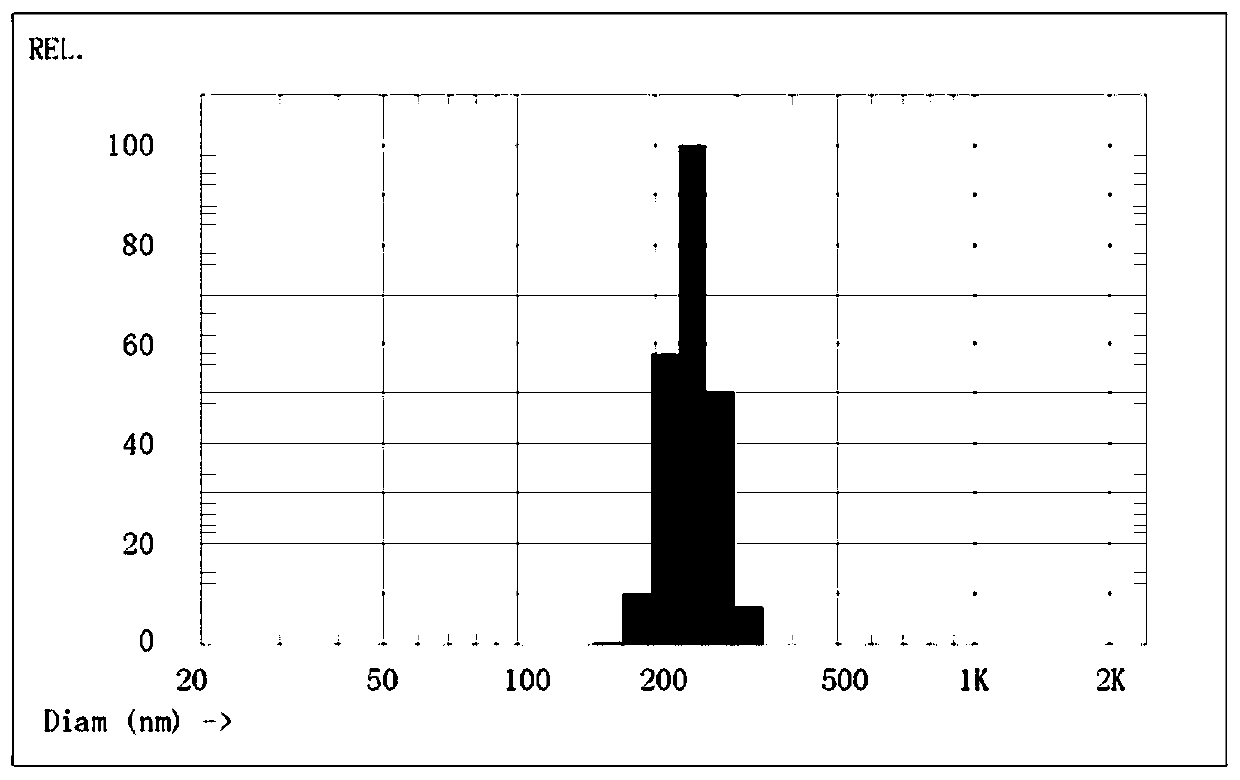Homogeneous chemiluminiscence detection kit and application thereof
A homogeneous chemiluminescence, detection kit technology
- Summary
- Abstract
- Description
- Claims
- Application Information
AI Technical Summary
Problems solved by technology
Method used
Image
Examples
Embodiment 1
[0157] Embodiment 1: Preparation of acceptor reagent
[0158] (1) Preparation and characterization process of aldehyde-based polystyrene latex microspheres
[0159] 1. Prepare a 100ml three-necked flask, add 40mmol styrene, 5mmol acrolein, and 10ml water, stir for 10min, and pass N 2 30min.
[0160] 2. Weigh 0.11g of ammonium persulfate and 0.2g of sodium chloride, dissolve them in 40ml of water to form an aqueous solution. This aqueous solution is added in the reaction system of step 1, continues to pass through N 2 30min.
[0161] 3. The temperature of the reaction system was raised to 70° C. and reacted for 15 hours.
[0162] 4. Cool the emulsion after the reaction to room temperature and filter it with a suitable filter cloth. The obtained emulsion was washed with deionized water for several times of centrifugation and sedimentation until the conductivity of the supernatant at the beginning of centrifugation was close to that of deionized water, then diluted with wa...
Embodiment 2
[0176] Embodiment 2: the determination of kit sensitivity and upper limit of detection
[0177] Define the sensitivity point as when the signal of concentration 2C0 is higher than the signal of twice the concentration of C0, that is, RLU(2C0)>2RLU(C0), then the sensitivity of the corresponding detection reagent is C0. The upper limit of detection is defined as the corresponding concentration obtained by substituting the detection signal with a concentration of 1000 ng / ml into the curve of concentration and signal.
[0178] (1) Dilute the cTnI antigen to 5pg / ml, 10pg / ml, 20pg / ml, 30pg / ml, 40pg / ml, 50pg / ml, 100pg / ml, 1000pg / ml, 5000pg / ml, 10000pg / ml, 50000pg / ml ml, 1000ng / ml series concentration, will adopt the same method as Example 1 to prepare different particle diameters (50nm, 80nm, 110nm, 140nm, 170nm, 200nm, 250nm, 300nm, 350nm, 400nm) coated with cTnI monoclonal antibody 1 Acceptor reagent (concentration is 100ug / ml), then with the same biotin-labeled cTnI monoclonal an...
Embodiment 3
[0189] Embodiment 3: Preparation of acceptor reagent
[0190] (1) Preparation of antibody-coupled receptor microspheres with an average particle size of about 250 nm
[0191] 1.1 Preparation and characterization process of aldehyde-based polystyrene latex microspheres
[0192] 1) Prepare a 100ml three-neck flask, add 40mmol styrene, 5mmol acrolein, and 10ml water, stir for 10min, and pass N 2 30min;
[0193] 2) Weigh 0.11g of ammonium persulfate and 0.2g of sodium chloride, dissolve them in 40ml of water to form an aqueous solution. This aqueous solution is added in the reaction system of step 1, continues to pass through N 2 30min;
[0194] 3) The temperature of the reaction system was raised to 70° C., and the reaction was carried out for 15 hours;
[0195] 4) Cool the emulsion after the reaction to room temperature, and filter with a suitable filter cloth. The obtained emulsion is washed with deionized water by centrifugation and sedimentation until the conductivity...
PUM
| Property | Measurement | Unit |
|---|---|---|
| particle diameter | aaaaa | aaaaa |
| particle diameter | aaaaa | aaaaa |
| particle diameter | aaaaa | aaaaa |
Abstract
Description
Claims
Application Information
 Login to View More
Login to View More - R&D
- Intellectual Property
- Life Sciences
- Materials
- Tech Scout
- Unparalleled Data Quality
- Higher Quality Content
- 60% Fewer Hallucinations
Browse by: Latest US Patents, China's latest patents, Technical Efficacy Thesaurus, Application Domain, Technology Topic, Popular Technical Reports.
© 2025 PatSnap. All rights reserved.Legal|Privacy policy|Modern Slavery Act Transparency Statement|Sitemap|About US| Contact US: help@patsnap.com



